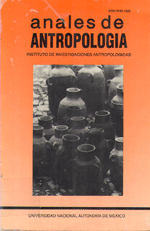El crecimiento infantil en una zona marginada de la ciudad de México
Main Article Content
Abstract
The present study is based on 400 child¡en, 100 boys and 100 girls aged 8 and 10 years respectively, from Ciudad Nezahualcóyotl, a poor off zone of the urban area in Mexico City. This report includes the basic statistical results of 10 direct and 2 calculated anthropometric measurements that were considered. When we compared our data with other results from Mexico, it was found that: 1. The children from Nezahualcóyotl were in general about one year behind, if compared our data with the medium-high socioeconomic strata from Mexico City.
2, They were also smaller than the low strata children from Mexico City 3. If compared vith some mestizo rural children, our samplewas about the same size and had bigger dimensions than sorne indian rural groups These results can be explained by means of differences in the socioeconomic level in rural-urban environments which are reflected in different nutrition and health.
2, They were also smaller than the low strata children from Mexico City 3. If compared vith some mestizo rural children, our samplewas about the same size and had bigger dimensions than sorne indian rural groups These results can be explained by means of differences in the socioeconomic level in rural-urban environments which are reflected in different nutrition and health.
Downloads
Download data is not yet available.
Article Details
How to Cite
Faulhaber, M. E. (2010). El crecimiento infantil en una zona marginada de la ciudad de México. Annals of Anthropology, 27(1). https://doi.org/10.22201/iia.24486221e.1990.1.15727
Esta revista usa una licencia CC del tipo CC BY-NC-ND 3.0. Se maneja bajo el esquema de acceso abierto, con una licencia Creative Commons Attribution-NonCommercial-NoDerivs 3.0 Unported.
